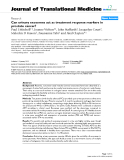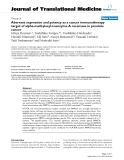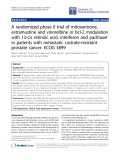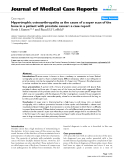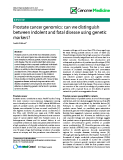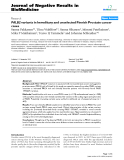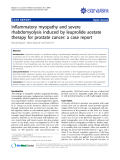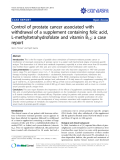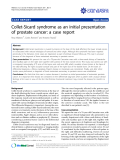
1
INTRODUCTION
Prostate cancer is the 2nd most common cancer and the 5th most
common death rate for men worldwide. The definitive diagnosis should
be based on digital rectal examination (DRE), serum PSA, prostate
biopsy results. Biopsy plays a decisive role in diagnosis of prostate
cancer, however biopsy results depend on biopsy methods and
techniques. At Viet Duc Hospital, Trans-rectal ultrasound guided
(TRUS) biopsy has been done since 2008, the 6-core and 10-core
prostate biopsy in the 2008-2011 period resulted in the positive cancer
rate of 59/104 (56.7%). But in this study, the vast majority of prostate
cancer patients were discovered at a later stage. In recent years, thanks
to improved prostate biopsy techniques, especially increasing the
number of biopsy pieces, has helped increase the early diagnosis rate of
prostate cancer. The early diagnosis of prostate cancer has helped to
monitor and treat it more actively, reducing the mortality rate of this
pathology. Based on that fact, we have implemented the project titled
“Studying the application of 12-core prostate biopsy by transrectal
ultrasound guidance for diagnosis of prostate cancer” to achieve the
following objectives:
1. Developing the indications and procedures of 12-core prostate
biopsy under transrectal ultrasound guidance.
2. Evaluating the results and giving the comments on relevant
factors of 12-core prostate biopsy under transrectal
ultrasound guidance.
The urgency of the thesis
Prostate biopsy is crucial in diagnosis of prostate cancer, stage of
the tumor and its treatment. However, the biopsy results depend on the
biopsy method and technique.
Curative treatment of prostate cancer (removal of the entire
prostate gland and seminal vesicles) depends on the stage of the disease
when the tumor is localized in the gland, stage T1, T2 and the age of the
patient is < 70 years old and has period expect to live for more than 10
years, but the symptoms of prostate cancer are poor, mainly diagnosed
based on serum PSA (Serum Prostate Specific antigen) and DRE detect
abnormal mass. In fact, patients come to health facilities with





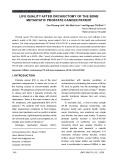
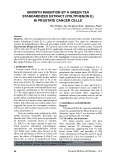
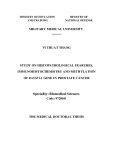

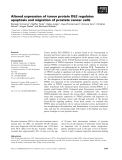
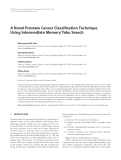
![báo cáo hóa học:" Comparative study of 64Cu/NOTA-[D-Tyr6,beta-Ala11,Thi13,Nle14]BBN(6-14) monomer and dimers for prostate cancer PET imaging"](https://cdn.tailieu.vn/images/document/thumbnail/2012/20120216/sting06/135x160/2191_219x_2_8_4685.jpg)
